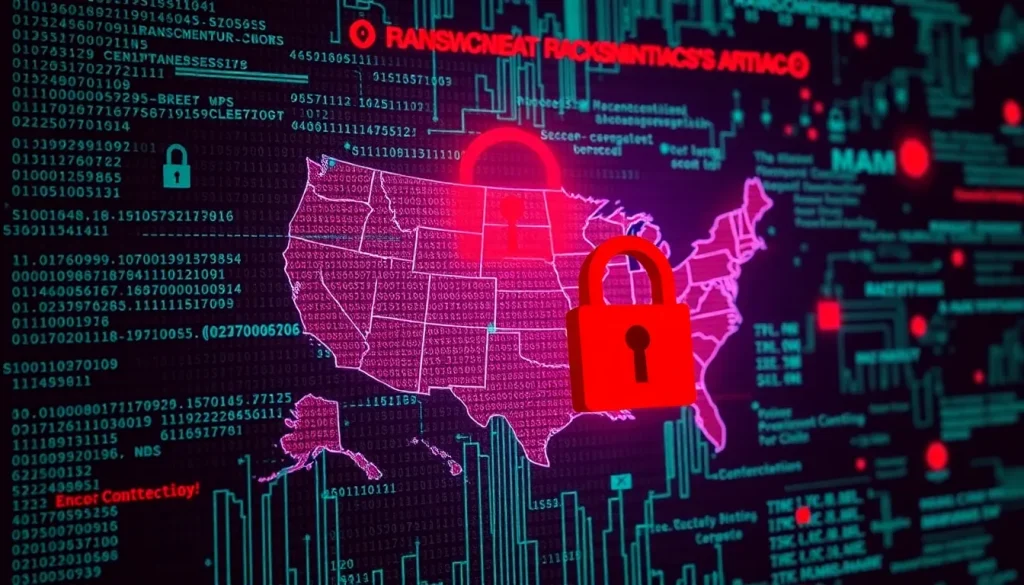Ransomware Attacks Target SMBs and Cities Across the Globe

In today's digital landscape, the threat of ransomware attacks looms larger than ever, impacting businesses and government entities of all sizes. What was once perceived as a concern primarily for large corporations has now infiltrated the operations of small to medium-sized businesses (SMBs) and municipalities, leaving them vulnerable to relentless cybercriminals. Understanding the nature of these attacks and how to protect against them is essential for fostering resilience in the face of an evolving cyber threat.
- The surge of ransomware attacks on SMBs and municipalities
- Understanding ransomware: A growing threat
- Case study: The St. Paul ransomware attack
- Impact on municipal services and recovery efforts
- Investigating the Aspen Academy cyberattack
- Addressing the cybersecurity vulnerabilities of municipalities
- Immediate actions for enhancing cybersecurity
The surge of ransomware attacks on SMBs and municipalities
The first half of 2025 has seen a staggering increase in weekly cyberattacks directed at small businesses, with the frequency nearly doubling compared to the same period last year. A report from cybersecurity firm Guardz highlights that over 80% of these attacks are aimed at stealing credentials, signaling a shift in strategy by cybercriminals.
As cyber threats become increasingly sophisticated and accessible, the landscape is shifting dramatically. Offering "attack-as-a-service" packages on the dark web has lowered the barrier for entry, enabling even novice hackers to launch effective ransomware campaigns. This trend serves as a stark reminder that no business is too small to fall victim to these attacks.
According to Dor Eisner, CEO of Guardz, “Hackers are targeting SMBs with the same intensity they apply to larger enterprises.” However, many of these smaller businesses often lack the robust defenses that larger companies can afford, making them prime targets for cybercriminals.
Understanding ransomware: A growing threat
Ransomware is a type of malicious software designed to block access to a computer system or data until a ransom is paid. This threat has evolved in complexity and frequency, making it crucial for organizations to understand its implications.
Recent data from NCC Group reveals that ransomware attacks and data leaks have reached an all-time high, increasing by 28% in the first quarter of this year alone. This alarming trend reflects the urgent need for businesses and municipalities to bolster their cybersecurity measures.
Case study: The St. Paul ransomware attack
A notable example of the growing threat of ransomware can be seen in the recent cyberattack on the City of St. Paul, Minnesota. Described as a “deliberate, coordinated, digital attack,” this incident severely disrupted public services and led to the complete shutdown of municipal information systems.
In response, Minnesota Governor Tim Walz activated the National Guard's cyber protection unit to assist with recovery efforts, indicating the scale and sophistication of the attack. The city's mayor, Melvin Carter, reported that suspicious activity was detected on July 25, prompting immediate action to contain the threat.
Impact on municipal services and recovery efforts
The fallout from the St. Paul cyberattack included significant disruptions such as:
- Wi-Fi outages in public buildings
- Interruptions in library services
- Shutdowns of many internal networks
- Emergency services, including 911, remained operational
Despite the chaos, city officials opted not to pay the ransom, instead choosing to restore data from backups made prior to the attack. This recovery process involved meticulous testing and validation to ensure system integrity.
Investigating the Aspen Academy cyberattack
In a related incident, the Aspen Policy Academy also fell victim to a cyberattack believed to have originated from a phishing scam. Betsy Cooper, the academy's founding director, emphasized that the investigation is ongoing. Unlike conventional training facilities, the Aspen Academy focuses on leadership development programs, making it a unique target for cybercriminals.
Cooper pointed out that municipal governments often face vulnerabilities due to:
- Limited IT and cybersecurity resources
- Large repositories of sensitive citizen data
- Lack of sustained investment in cybersecurity infrastructure
Addressing the cybersecurity vulnerabilities of municipalities
With budget constraints and challenges in attracting top cybersecurity talent, local government agencies and SMBs often struggle to defend against evolving cyber threats. However, there are several strategies that can be implemented to enhance their cyber defenses:
- Explore public-private partnerships to leverage additional resources.
- Reassess procurement processes for more agile approaches.
- Prioritize talent recruitment through fellowship programs.
- Engage with communities of practice like Information Sharing and Analysis Centers (ISACs).
Immediate actions for enhancing cybersecurity
Betsy Cooper recommends that municipalities take immediate steps to strengthen their cybersecurity posture:
- Conduct a thorough audit of existing infrastructure to identify vulnerabilities.
- Ensure that all systems are regularly patched and updated.
- Implement compartmentalization strategies to prevent incidents from spreading.
- Establish a clear incident response plan detailing when to involve legal counsel and steps for containment.
As the threat landscape continues to evolve, ongoing education and proactive measures will be critical in safeguarding municipal and SMB operations. Engaging employees in cybersecurity awareness and training programs can further bolster defenses against potential attacks.
To further understand the implications of ransomware attacks, you can check out this informative video that discusses the impact on various organizations:
The rise of ransomware is a clear indication that no organization is immune to cyber threats. By investing in robust cybersecurity strategies and fostering a culture of awareness, small businesses and municipalities can better navigate the complex digital landscape.




Leave a Reply